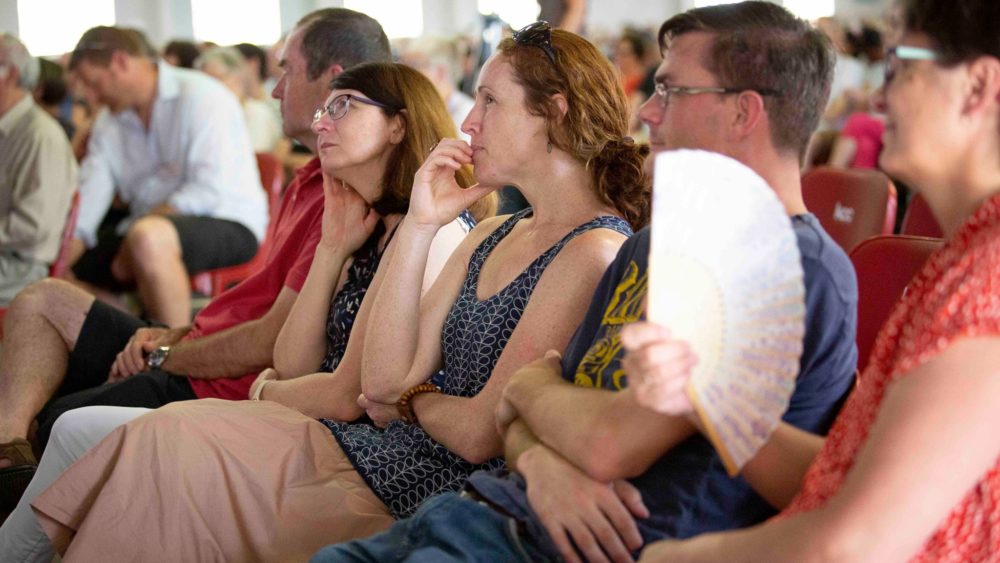Aussie mission agency gets creative
New partnerships to support international and Indigenous leaders
Kartik*, a Christian leader from Nepal, watched helplessly as his father, Hartaj*, lay completely paralysed in hospital, suffering from Guillain-Barré syndrome, a rare disorder in which the body’s immune system attacks the nerves.
As Hartaj suffered in hospital, he says God gave him a vision that he would plant churches among the Buddhist people in the Nepalese mountains. As he recovered, he went with his friend, in obedience to that call, to evangelise in Himalayan villages.
“I asked him how he managed that when he was still recovering,” says Peter Rodgers, international director of the Church Missionary Society (CMS), an Australian mission agency.
“He said, ‘when I couldn’t walk, my friend carried me, and when he couldn’t carry me, I crawled.’
“Today they support 50 congregations and it is our privilege to partner with Kartik as he takes over the leadership of their mission.”
Rodgers told the recent CMS Summer School NSW/ACT in Katoomba that CMS, at a national level, wants to expand its focus on co-mission partnerships internationally, as well as with Aboriginal people in Australia.
“Our missionaries can attest to the amazing blessing these three people already are to the college.” – Peter Rodgers
CMS has been partnering with Nungalinya College in Darwin to train Indigenous leaders for decades. It is sending Ian and Jenny Wood soon to join two other CMS missionaries on staff, and will keep sending missionaries to serve at Nungalinya, Rodgers said.
“But what about training up Indigenous teachers? In time, it would be great to see an Aboriginal person as the Principal of Nungalinya. So, we are partnering with Nungalinya College to invest in training up three Indigenous teachers. They are Anglicans already serving in the Diocese of the Northern Territory,” he said.
“James has already become a trainee teacher and is working full time. Mandy and Marlene are still assistant teachers. Our missionaries can attest to the amazing blessing these three people already are to the college.”
Rodgers says this is a new kind of co-mission partnership for the Australian mission agency, which allows it to support local Christians who are not CMS missionaries but are already working in exciting ministries in their home countries.
“As our missionaries serve around the world, we meet and disciple amazing people who are doing great things and who we want to support in mission, even long after the missionary has returned home. But these people have no connections in Australia or ever visited Australia,” said Rodgers.
“When we identify such people worthy of financial and prayer support, we can formalise our partnership with them as CMS Co-Mission Partners. We can provide financial support, usually just part funding, through our mission support fund. We may decide to support them for limited time, say three to six years, as they establish their own local support structures. And we can commit to prayer for them.”
CMS has 215 of its own missionaries (singles or couples) in 45 countries, who raise their financial support through partnerships with individuals and churches in Australia to work with local churches and believers overseas. But CMS also wants to support Christian people from overseas who would struggle to raise their own support for their ministries.
“What excites us is to support people in their mission work who share a common desire with us to see a world that knows Jesus.” – Peter Rodgers
“We’re doing something that is creative. It is not about adding more CMS missionaries; rather, we are supporting them as they do their local expression of mission. What excites us is to support people in their mission work who share a common desire with us to see a world that knows Jesus.
“We have dabbled in this before, but we’ve now nailed it down in a way that’s much bigger and better and has got sustainability.”
He gave two examples of such partnerships. One was Kartik, whose story was told earlier. The other was Andrea from Italy, who was discipled and trained by CMS missionary Andrew Lubbock in Florence. Andrea was then was supported to study at Cornhill in London and served as an apprentice at St Ebbe’s Church in Oxford. Now Andrea is a CMS Co-Mission Partner serving as the student worker in Florence, the role that once Lubbock occupied.
“This Co-Mission Partner program enables the Australian church, through CMS, to partner with amazing people, doing extraordinary things, that we wouldn’t have known about or had access to,” Rodgers said.
“We are sending more missionaries than ever. And we expect our missionary numbers to keep growing.”
Rodgers rejected the idea that this new focus on Co-Mission Partnerships would mean fewer resources going into more traditional areas of mission.
“No way. Our core business is sending long-term missionaries and that hasn’t changed. Actually, we are sending more missionaries than ever. And we expect our missionary numbers to keep growing.”
This was why, he said, CMS had the confidence to redevelop its training facility in Melbourne, St Andrew’s Hall, at a cost of $17 million, “and effectively double our capacity.”
Contrary to some reports of declining numbers of missionaries from first world countries, the trajectory of missionaries sent by CMS had been moving upwards for several years, he said. In 2000, CMS had 144 missionaries; in 2010, there were 187; and this year’s total is 215 – a 50 per cent increase over the past 20 years.
“And we are encouraged by a lot of enquirers coming through, which gives us reason for confidence.”
*Names changed for security reasons
Email This Story
Why not send this to a friend?


